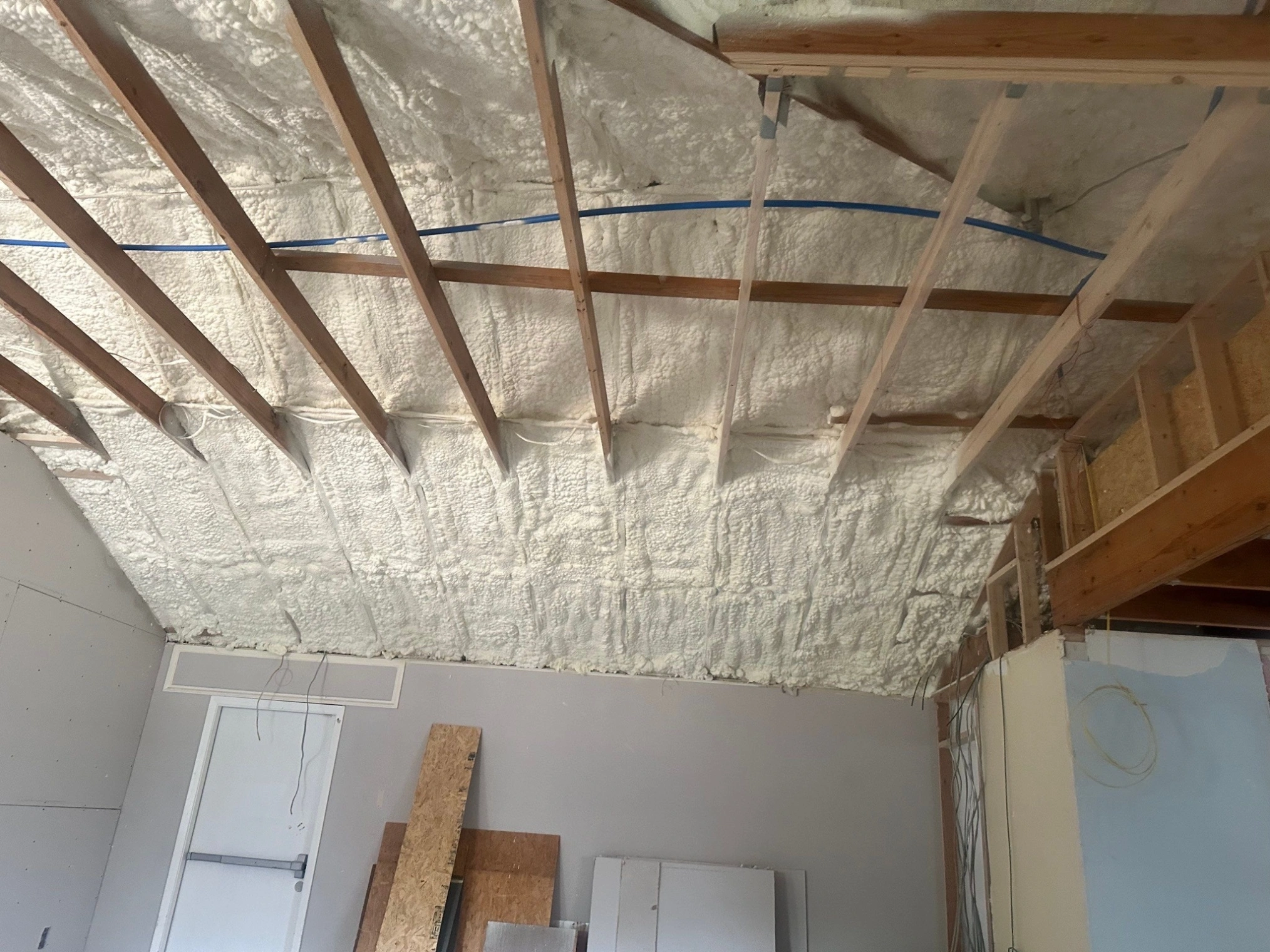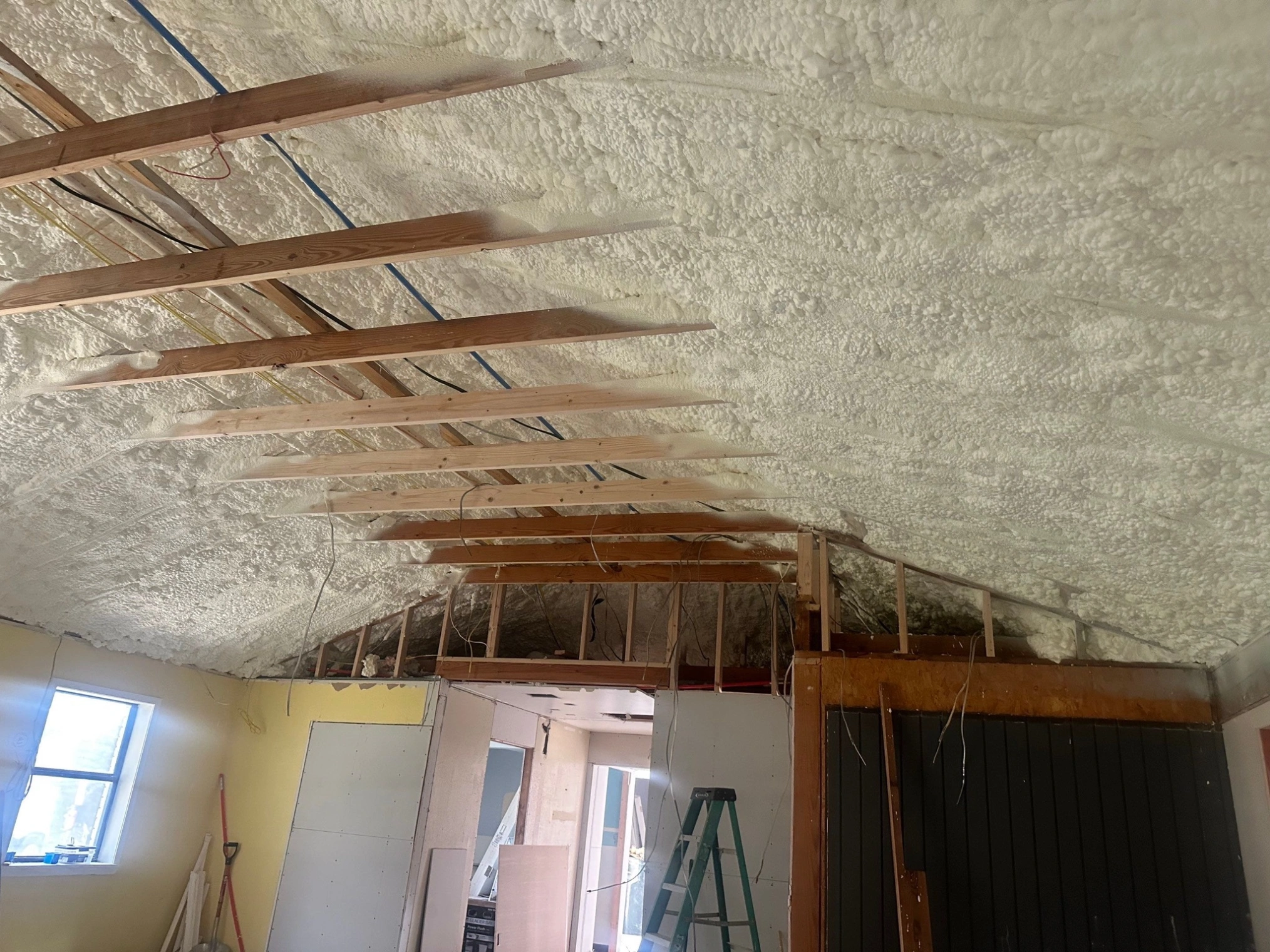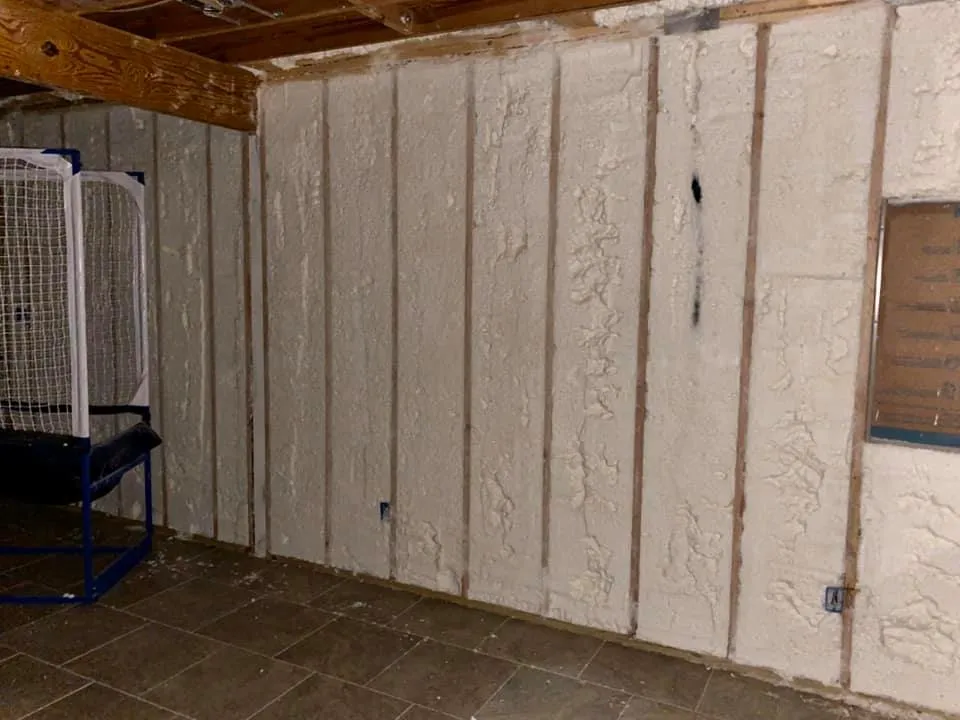Spray foam insulation significantly improves indoor air quality by creating an airtight barrier that prevents outdoor pollutants, allergens, and moisture from entering your home. When properly installed and fully cured, spray foam eliminates air leaks that allow dust, pollen, and humid Texas air to infiltrate living spaces, resulting in cleaner indoor environments and reduced allergen exposure.
The effectiveness depends on proper installation techniques, adequate curing time, and choosing the right foam type for your specific application. Understanding these factors helps homeowners make informed decisions about improving their indoor air quality while maximizing energy efficiency benefits.
This comprehensive guide examines how spray foam insulation impacts indoor air quality in New Braunfels unique climate conditions, providing practical insights based on real-world installation experience and performance data from Central Texas homes.
How Spray Foam Insulation Enhances Indoor Air Quality
Spray foam insulation creates a continuous air barrier that dramatically reduces uncontrolled air infiltration. Traditional insulation materials like fiberglass allow air movement through gaps and seams, carrying outdoor pollutants directly into living spaces. Spray foam expands to fill every crack and crevice, eliminating these pathways completely.
The airtight seal prevents common indoor air quality problems including dust infiltration, pollen entry, and moisture-related issues. Texas homes experience significant benefits during high-pollen seasons when properly sealed spaces maintain cleaner air without constant filtration system strain.
Bonus Tip: Install spray foam during low-humidity periods (typically October through March in Central Texas) to ensure optimal curing and maximum air-sealing performance.
Closed-cell spray foam provides superior moisture control compared to open-cell alternatives. This moisture barrier prevents condensation within wall cavities that leads to mold growth and associated air quality problems. The dense structure also blocks volatile organic compounds (VOCs) from construction materials from migrating into living areas.
Regional Climate Considerations for New Braunfels Homes
Central Texas’ hot, humid summers create unique indoor air quality challenges that spray foam insulation in New Braunfels, TX addresses effectively. High outdoor humidity levels can infiltrate homes through air leaks, creating condensation problems and promoting mold growth in wall cavities and attic spaces.
New Braunfels’ average summer humidity ranges from 60-80%, making moisture control critical for maintaining healthy indoor environments. Spray foam’s vapor barrier properties prevent humid outdoor air from entering conditioned spaces, reducing indoor humidity levels and improving comfort.
The region’s extended cooling season (May through October) means air conditioning systems work constantly. Proper air sealing with spray foam reduces the load on HVAC systems while preventing contaminated outdoor air from bypassing filtration systems entirely.
Spray Foam Types and Air Quality Impact Comparison
| Foam Type | Air Sealing Capability | Moisture Control | VOC Emissions | Best Applications |
|---|---|---|---|---|
| Open-Cell | Good (4-6 ACH50) | Limited vapor barrier | Low after curing | Interior walls, sound dampening |
| Closed-Cell | Excellent (1-3 ACH50) | Complete vapor barrier | Very low after curing | Exterior walls, below-grade applications |
| Low-VOC Formulations | Good to excellent | Varies by type | Minimal during/after installation | Sensitive environments, schools |
Technical Performance Data for Indoor Air Quality
| Performance Metric | Before Spray Foam | After Spray Foam Installation | Improvement |
|---|---|---|---|
| Air Changes per Hour (ACH50) | 8-15 ACH50 | 1-4 ACH50 | 70-85% reduction |
| Indoor Particulate Matter (PM2.5) | 15-25 μg/m³ | 5-12 μg/m³ | 50-75% reduction |
| Relative Humidity Control | ±15% variation | ±5% variation | 65% improvement |
| HVAC Runtime Reduction | Baseline | 25-40% less | Significant energy savings |
Common Installation Factors Affecting Air Quality
Proper installation timing directly impacts indoor air quality outcomes. Spray foam requires specific temperature and humidity conditions for optimal curing. Installing during Central Texas’ cooler months ensures complete chemical curing and minimizes off-gassing periods.
Ventilation during installation protects workers and prevents chemical exposure in occupied spaces. Professional installers use negative air pressure systems to direct fumes away from living areas while foam cures completely over 24-48 hours.
Bonus Tip: Schedule installation when you can ventilate the home for 48-72 hours post-application, allowing complete curing and eliminating any residual chemical odors before occupancy.
Thickness application affects both thermal performance and air quality benefits. Insufficient foam thickness creates thermal bridging and incomplete air sealing. Excessive thickness can lead to extended curing times and potential off-gassing issues in confined spaces.
Professional Spray Foam Services for Optimal Air Quality
Stellrr Insulation & Spray Foam provides comprehensive insulation solutions designed to maximize indoor air quality improvements throughout New Braunfels and surrounding areas.
- Residential Spray Foam Insulation: Complete home air sealing using premium closed-cell and open-cell formulations selected based on specific application requirements and performance goals.
- Attic Insulation: Strategic foam application in attic spaces to prevent conditioned air loss and block outdoor contaminant infiltration through common leak points.
- Crawl Space Insulation: Moisture control and air sealing in below-grade areas where humidity problems typically originate, preventing mold growth and improving overall air quality.
- Insulation Removal: Safe removal of contaminated or failed insulation materials before spray foam installation to ensure optimal performance and air quality outcomes.

Things to Consider Before Making a Decision
Evaluate your current indoor air quality issues before selecting insulation solutions. Homes with existing mold problems require remediation before spray foam installation to prevent sealing contaminants inside wall cavities. Professional air quality testing identifies specific problems that insulation improvements can address.
Consider your family’s chemical sensitivities when choosing foam formulations. While modern spray foams have minimal off-gassing after proper curing, individuals with severe chemical sensitivities may benefit from low-VOC formulations or alternative approaches.
Budget for complete air sealing rather than partial applications. Spray foam provides maximum air quality benefits when applied comprehensively throughout the building envelope. Partial applications may not deliver expected improvements in highly leaky homes.
According to the National Institute of Building Sciences, homes with proper air sealing achieve 20-30% better indoor air quality scores compared to conventionally insulated structures. The Environmental Protection Agency reports that spray foam insulation reduces indoor allergen levels by up to 60% in properly sealed homes.
Plan installation timing around occupancy schedules. While properly installed spray foam poses no long-term health risks, temporary relocation during installation and initial curing (24-48 hours) ensures optimal comfort and safety.
Common Questions About Spray Foam and Air Quality
Is spray foam safe for indoor air quality after installation?
Properly installed and fully cured spray foam poses no ongoing air quality risks. Modern formulations meet strict indoor air quality standards and actually improve air quality by preventing outdoor contaminant infiltration.
How long does spray foam take to cure completely?
Most spray foam formulations cure within 24-48 hours under normal conditions. Complete chemical curing may take up to 30 days, but homes are safe for occupancy after the initial 48-hour period with proper ventilation.
Can spray foam cause allergic reactions?
Uncured spray foam chemicals can cause respiratory irritation, which is why proper ventilation and occupancy restrictions during installation are essential. Fully cured foam is chemically inert and does not trigger allergic reactions.
Will spray foam eliminate all indoor air quality problems?
Spray foam significantly reduces air infiltration and associated contaminants but does not replace proper HVAC filtration or address existing indoor pollution sources like cleaning products or furnishings.
Making the Right Choice for Your Home’s Air Quality
Understanding spray foam’s impact on indoor air quality helps New Braunfels homeowners make informed insulation decisions. Proper installation by experienced professionals ensures maximum air quality benefits while avoiding common pitfalls that compromise performance.
Evaluate your specific air quality concerns, existing insulation condition, and long-term comfort goals when planning improvements. The investment in comprehensive spray foam insulation delivers sustained air quality benefits that protect family health while reducing energy costs throughout Central Texas’ demanding climate conditions.
Get Expert Insulation Guidance
Transform your home’s indoor air quality with professional spray foam insulation solutions tailored to New Braunfels’ unique climate challenges. Our experienced team provides comprehensive assessments and expert installation services designed to maximize air quality improvements while ensuring safety and performance.
Contact Stellrr Insulation & Spray Foam today to discuss your indoor air quality goals and explore customized insulation solutions for your home.
Phone: (512) 710-2839
Email: info@stellrr.com
Frequently Asked Questions
Does spray foam insulation eliminate the need for air filtration systems?
Spray foam dramatically reduces outdoor contaminant infiltration but HVAC filtration systems remain important for capturing indoor-generated particles, cooking odors, and other pollutants that originate inside the home.
How does spray foam perform during Texas storms and high winds?
Properly installed spray foam maintains its air-sealing properties during severe weather events, preventing wind-driven rain and outdoor contaminants from entering through building envelope breaches that compromise indoor air quality.
Can I install spray foam over existing insulation without air quality concerns?
Installing spray foam over contaminated or moldy existing insulation traps problems within wall cavities. Professional assessment and potential removal of compromised materials ensures optimal air quality outcomes.
What maintenance is required to preserve air quality benefits?
Spray foam insulation requires no ongoing maintenance to maintain air quality benefits. Regular HVAC filter changes and periodic home air sealing inspections ensure continued optimal performance.
How quickly will I notice air quality improvements after spray foam installation?
Most homeowners observe reduced dust accumulation and improved allergy symptoms within 2-4 weeks after installation as the home’s air exchange rate stabilizes and outdoor contaminant infiltration decreases significantly.





